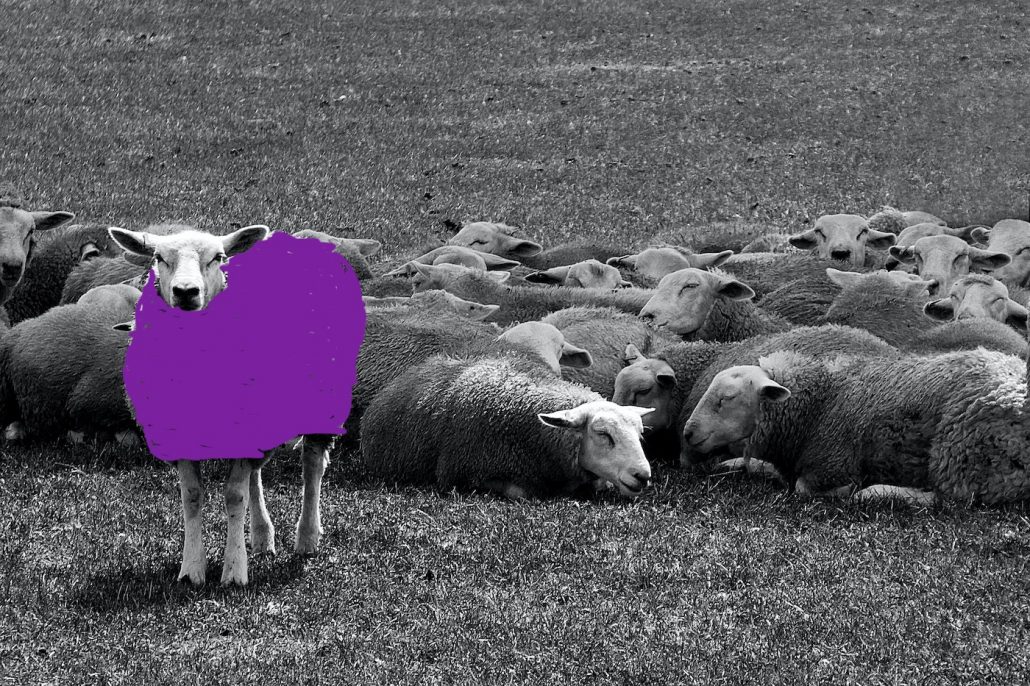
When it comes to marketing our businesses, most of us like to play it safe and follow the herd. But in today’s market, that’s actually a dangerous move.
Zig verb
“The accidental action of doing exactly the same as your competitors, and therefore getting lost in the crowd.”
Zag verb
“The deliberate action of doing the opposite to your competitors, and as a result – standing out from the crowd.”
Most businesses tend to use the same words to describe what they do as their competitors – because they assume this is what the market wants. Give the market what it wants and you can’t go wrong – right?
Unfortunately this doesn’t necessarily work. Because by doing so, we end up offering the same things as our competitors. And from the customers’ perspective, this means a sea of ‘sameness.’ They simply can’t tell the difference between one company and another.
Do a Google search on Lawyers in Sydney and the same words pop up nearly every time. Words like ‘experience,’ ‘dedication,’ ‘expertise,’ ‘personalised,’ and ‘professional’ appear time and time again on their websites.
Everyone is rushing to say the same thing. Everyone is ‘zigging.’
‘So how about ‘zagging’ instead?
Bit risky isn’t it? Well, no actually. As long as your ‘zag’ is founded on the truth about what really makes you and your business tick, and addresses a fundamental customer problem and need – then it’s actually a lot safer.
Why don’t more businesses ‘zag?’ The answer is complex – but it has a lot to do with the perceived safety of herd mentality, and the popular belief that it’s simply too hard to innovate or offer something new – because if it was that easy, some one would have already thought of it.
So instead of ‘zagging,’ businesses spend money on a new logo and a flashy website. They think that slapping some paint on the problem will fix it. But this solution is only skin-deep. Their ‘point of difference’ remains the same. It look might look a little different at first glance, but it lacks substance. People will quickly see that nothing’s really changed.
OK – so we’ve decided to give the ‘zag’ theory a go. Where do we start? How do you go about creating a genuine point of difference for your business?
The good news is that you already have one. That’s because if you run a small to mid-sized business, you are your brand. As the owner of an SME brand, your own personality and sense of purpose are reflected by that brand. People see you as the brand. And as we all have a unique set of skills, and a different view of the world from everyone else – it means our brands automatically have the potential to be unique.
As the owner of your business, how do you tap into this innate uniqueness?
The first step to take is to ask yourself why you created your business.
What was the driving force?
What did you really want to achieve, or change about the market you operate in?
What is your underlying purpose for doing the work you do? (Your ‘Why’)
This is the first step to creating a story about your business that’s founded on the truth. Once you do this, you and your business are aligned.
Isn’t that why you left the corporate world in the first place? To do work you really enjoy? To make a difference?
Armed with this new approach, you can take the mask off and be yourself in your business. You can use language that comes naturally, rather than to reach for the clichéd business terms everyone else is using.
You can then go about building a unique brand story for your business.
Once you have got clear on your ‘why,’ it’s time to consider these questions:
And the benefits of this approach?
No make-up needed. You immediately stand out from the ‘experienced,’ ‘understanding’ and ‘tailored’ competitors out there.
Just as people can spot a fake a mile off, they love the genuine article. By talking in simple, honest and direct terms about what you do, customers instinctively know you are telling the truth. They recognise the authenticity of your message and trust is immediately established.
By stating up front what your brand stands for – and promoting your brand story on your website, in your brochures, and all other marketing communications – you put a stake in the ground. You make a statement. This means that some people will be put off by it. Which is great – because these are the time-wasters that aren’t sure of what they want. They use up your valuable time trying to decide if you have what they need. But not any more – they can see straight away that you don’t. And this means your sales conversion rate goes up.
Because there’s no one else in your market offering what you do – you are unique. So it’s much harder to price compare. So you can afford to charge more for the unique product or service you offer.
But surely the biggest benefit of this ‘truth in marketing’ approach is that now you are working on something that is very closely aligned to your own values – and that you are really passionate about – you will give much more to the business.
So next time you’re considering a ‘brand make over,’ don’t just go with cosmetic changes. Go the whole hog, and ‘zag’ your business.
About
Justin Cooper is the founder of Brand Purpose .Co, which helps employees, business owners and business leaders to define their Purpose and leverage it through their work, business, brand and communications in a way that inspires, unites and connects the people they work with.